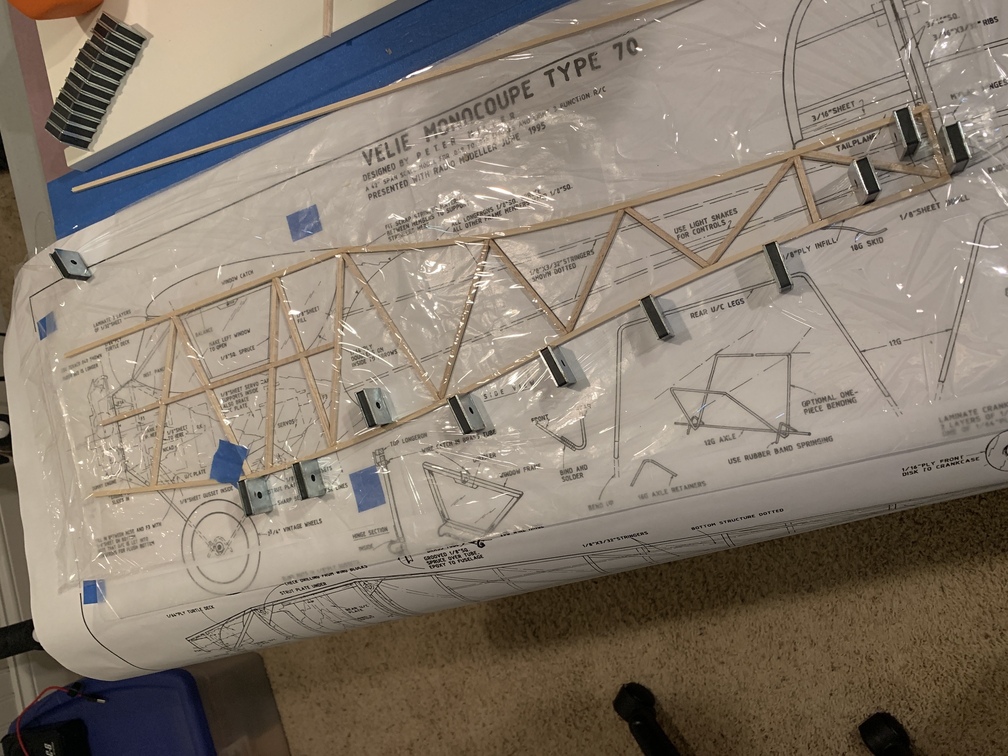Ailerons

I had a few ideas for hinging including thread-stitched hinges, covering film, etc. Since I will be using Esaki Japanese tissue I decided to use traditional nylon hinges instead of follow the building article with iron-on film and film hinges. The tissue and dope method is one of my favorite ways of covering, it is both old-school and helps bring out the beauty of balsa built models rather then covering them with opaque film. Covering side-bar: Here's a test square I made with Esaki tissue from Peck Polymers that I purchased for the Velie Monocoupe since they have the blue and orange colors I wanted. The square is 120x100mm and the net weight of the cover is about 1gr: Back to aileron hinges. The new LE and TE for the ailerons was not thick enough for the hinges so I built out the area with two 1/16" balsa strips that will hold the hinge between them. The first layer is glued 1/16" below the top so that the second sheet is flush with the top of the rib: I marked the hing ...





